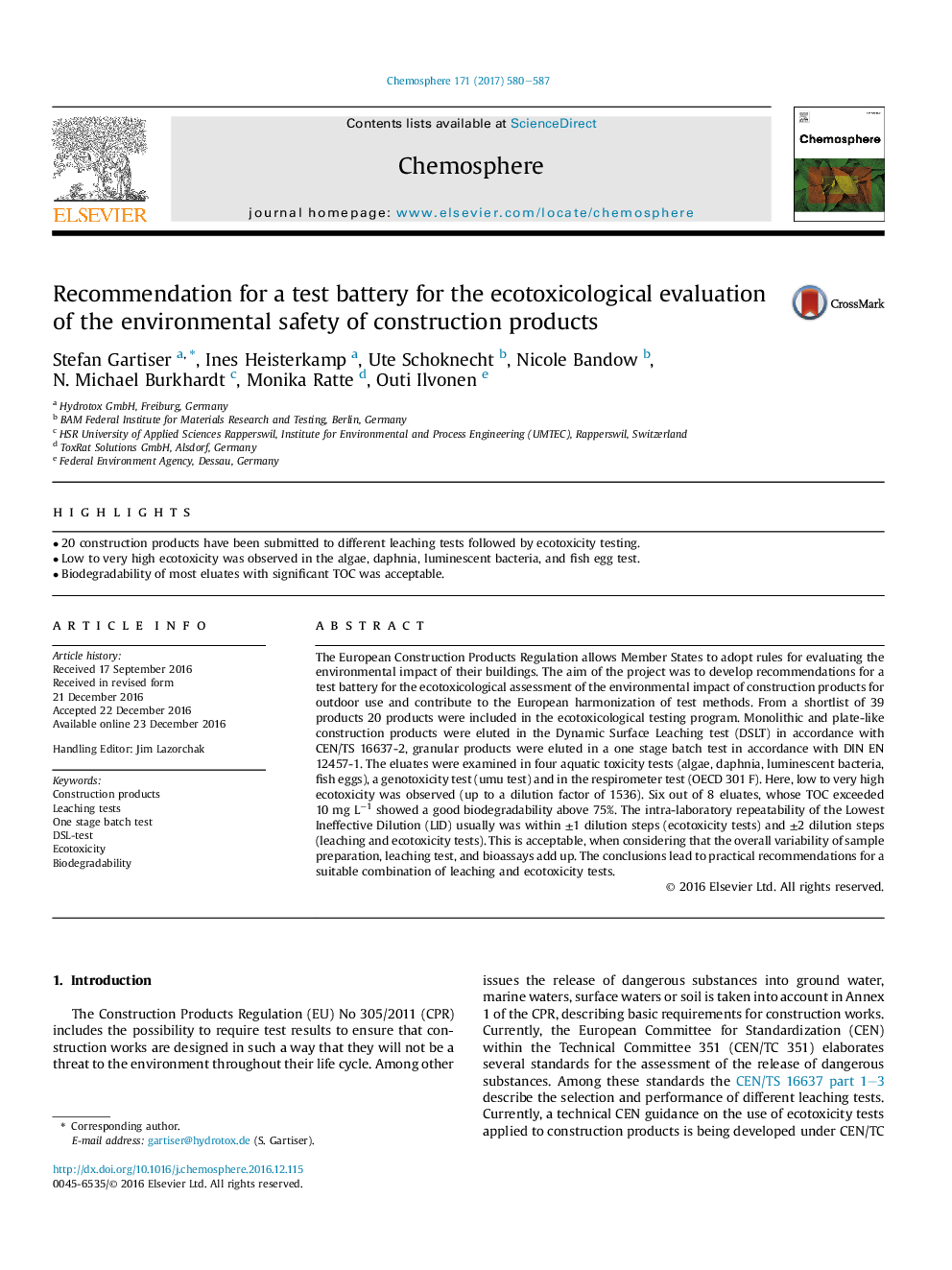| Article ID | Journal | Published Year | Pages | File Type |
|---|---|---|---|---|
| 5746372 | Chemosphere | 2017 | 8 Pages |
Abstract
The European Construction Products Regulation allows Member States to adopt rules for evaluating the environmental impact of their buildings. The aim of the project was to develop recommendations for a test battery for the ecotoxicological assessment of the environmental impact of construction products for outdoor use and contribute to the European harmonization of test methods. From a shortlist of 39 products 20 products were included in the ecotoxicological testing program. Monolithic and plate-like construction products were eluted in the Dynamic Surface Leaching test (DSLT) in accordance with CEN/TS 16637-2, granular products were eluted in a one stage batch test in accordance with DIN EN 12457-1. The eluates were examined in four aquatic toxicity tests (algae, daphnia, luminescent bacteria, fish eggs), a genotoxicity test (umu test) and in the respirometer test (OECD 301 F). Here, low to very high ecotoxicity was observed (up to a dilution factor of 1536). Six out of 8 eluates, whose TOC exceeded 10 mg Lâ1 showed a good biodegradability above 75%. The intra-laboratory repeatability of the Lowest Ineffective Dilution (LID) usually was within ±1 dilution steps (ecotoxicity tests) and ±2 dilution steps (leaching and ecotoxicity tests). This is acceptable, when considering that the overall variability of sample preparation, leaching test, and bioassays add up. The conclusions lead to practical recommendations for a suitable combination of leaching and ecotoxicity tests.
Related Topics
Life Sciences
Environmental Science
Environmental Chemistry
Authors
Stefan Gartiser, Ines Heisterkamp, Ute Schoknecht, Nicole Bandow, N. Michael Burkhardt, Monika Ratte, Outi Ilvonen,
